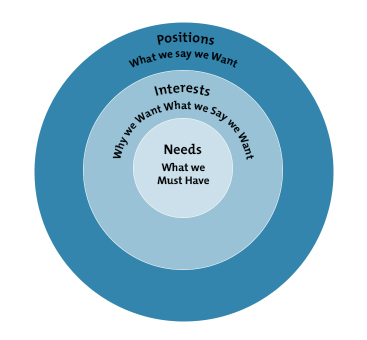The Conflict Layer Model
Clarifying Needs During Negotiations

© iStockphoto
Lezh
"Peel back the layers," for a more effective negotiation.
When you were last involved in a negotiation (however big or small), did you feel that you truly understood the other person's needs? Chances are, you didn't.
During negotiations, it's common for people not to reveal their deepest needs – sometimes, even to themselves. They may feel selfish, foolish, or vulnerable talking about them, so they focus on less important issues instead.
Unfortunately, when this happens, the negotiation may not deliver a long-term solution, because it won't be based on what people really want.
In this article, we'll look at the Conflict Layer Model, a tool that you can use to explore your own true needs in a negotiation situation.
About the Model
Simon Fisher, Dekha Ibrahim Abdi, Jawed Ludin, Richard Smith, Steve Williams, and Sue Williams explained the Conflict Layer Model in their 2000 book, "Working with Conflict."
The model, also known as the Onion Model of Conflict Resolution and the PIN Model of Conflict Resolution, is shown in figure 1.
Figure 1 – The Conflict Layer Model

From "Working With Conflict" by S. Fisher et al. Published by Zed Books, 2000. Reproduced with permission.
During negotiations where you don't know or trust the other person, you may hide your needs because you feel embarrassed or vulnerable. Instead, you might take up a stance that's based on how you want to be perceived. This is known as your position.
Behind your position lie your interests. These are the stated reasons that support your position, but they may not represent your true needs.
The model aims to peel away these layers, and to focus on the needs that really matter to you. When you state your needs openly, it will encourage the other party to do the same. Then, once you've both identified and communicated your real needs, you can work to find a solution that meets them.
Note:
This model is not suitable for all negotiations. It's more suited to situations in which people feel able to talk freely and openly, and it's less appropriate when people's needs must be hidden, or when people must be seen to "toe a party line." In this situation, distributive bargaining may be more suitable.
Read our article on Lewicki and Hiam's Negotiation Matrix to choose the right negotiation approach. You'll see that the Conflict Layer Model most closely matches Lewicki and Hiam's collaboration strategy.
How to Apply the Model
You can use the model to prepare before negotiations begin, as well as to understand other people's needs during the negotiation. Follow the steps below to do your preparation. You can use a similar approach...
Access the Full Article
This article is only available in full within the Mind Tools Club.
Learn More and Join TodayAlready a Club member? Log in to finish this article.


